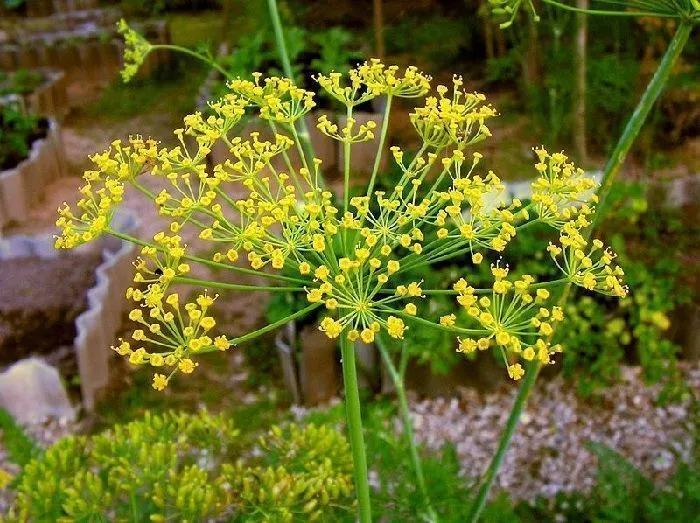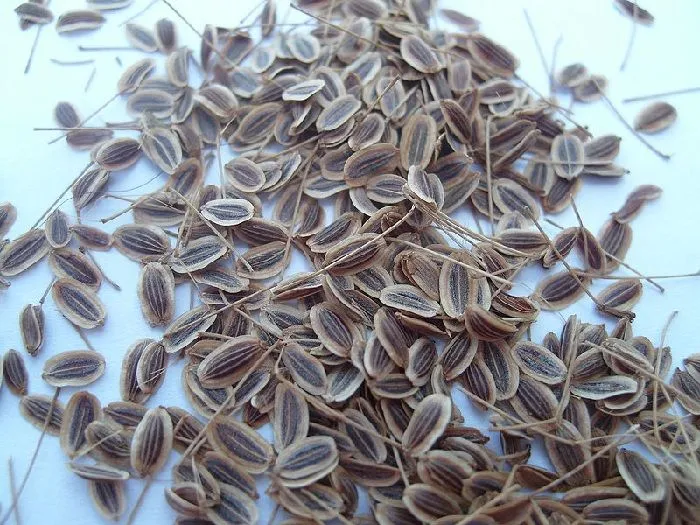One of the typical things that reminds us of this aromatic plant, dill, is the marinades that can be made with it and, above all, salmon. We have before us an herb of great gastronomic use throughout the wide and long planet, and provides a pleasant taste and aroma to a large number of dishes.
Such a simple thing to grow can not do without having a hole in our kitchen!

Table of Contents
Four things you should know about Dill
Its origin is Asian and Eastern, although it is already distributed in many other areas, including those of Europe (especially the Mediterranean area). We can know it scientifically as Anethum graveolens and belongs to the family Apiaceae.
Surely, returning to the gastronomic theme, if you take dill and smell it, leave a trace to other aromatics such as fennel or parsley. This great coincidence owes its origin to the fact that these three great herbs share a family (apiaceae or umbelliferous).
Use of Dill
Of Anethum graveolens we can take advantage of everything or almost everything. What is most used are its leaves, but there are cultures that do not despise stems or fruits. Normally, if you dare to marinate with your own cultivated dill you will use the leaves. Of course, for tastes the colors. : )
Eye! It does not end there, since it is not only used with gastronomic use. You only have to go through books of agriculture and botany to realize all the medicinal properties of Anethum graveolen. We summarize them, basically, according to these properties:
- Digestive properties
- Carminative properties
- Antiseptic properties
This means that, in addition to providing an incredible flavor to many of your dishes, you are also contributing to the proper functioning of the digestive system, in addition to the control of pathogenic organisms. Can you ask for more? Well, yes, your essential oil It is used as a scent for many cosmetic and pharmaceutical products, whether manufacturing soaps, gels and other hygiene products. All in one!
4 things to keep in mind to grow Anethum graveolens (Dill)
Soil
One of the factors that most must be highlighted and that we can control is the soil, either of our garden or orchard or the substrate, if we grow it indoors or in pots.
We need a soil in temper or a substrate that holds the humidity well, since dill is sensitive to dryness (it shows this with the “sadness” and wilting of its leaves).
When choosing a substrate among many that exist, we will have to look at its pH. Many brands provide us with that data, so we will have to choose the one that can give us a Acidic pH or slightly acidic (5 to 7).
We will control the level of organic matter either by acquiring substrates with good content (in addition to the one we will provide progressively) or by having a fertilizer of compost or decomposed manure before transplanting the dill.
Climate
A temperate or Mediterranean climate is perfect for dill development (Anethum graveolens) without any problems. It is necessary to check that it is not exposed to the excessive heat or high temperatures, since extreme warmth does not benefit you.
If we have to make him have a bad drink, it is better to water at the time of greatest stress, providing moisture in the substrate and increasing the environmental humidity.
Irrigation
All will depend on the weather where you are (or if you plant dill in the garden or in pots inside your house). A substrate that is always slightly moist is ideal, preventing the soil from drying out (cracks or crusts forming) or remaining retained in the pot.
Transplantation
When it comes to dill there are several options. Buy the plant directly in a nursery or multiply it through seeds. Transplants do not have a high success rate, and that is attributed to the fact that the roots do not develop as well as other plants do.
Solutions? Sow the seed directly, or perform the transplant in the most “clean” way possible and do not neglect the following days.

When sowing Anethum graveolens We will try not to bury the seed more than 1 cm, in order not to lengthen the germination period excessively. In a matter of 15 days we can see, if there are no problems, the seedling resurface from the substrate.
Conservation of its leaves and harvesting periods
Being a very fast growing plant we can start collecting fresh leaves between 45 and 60 days after planting. Within the table we made in the conservation of various aromatic and medicinal plants we can see that dill can be frozen (maximum 6 months) but it is not advisable to dry. If it dries it will lose much of the characteristic aroma.
